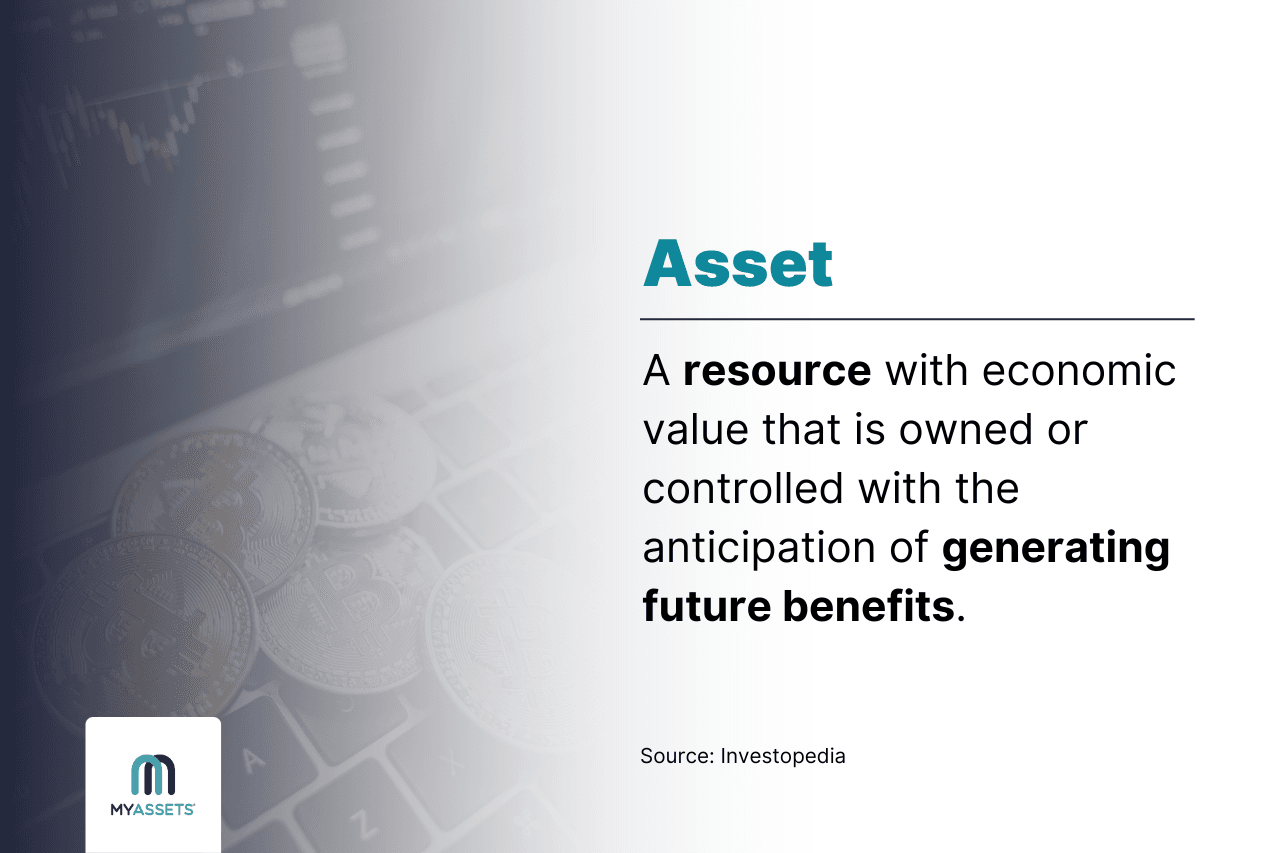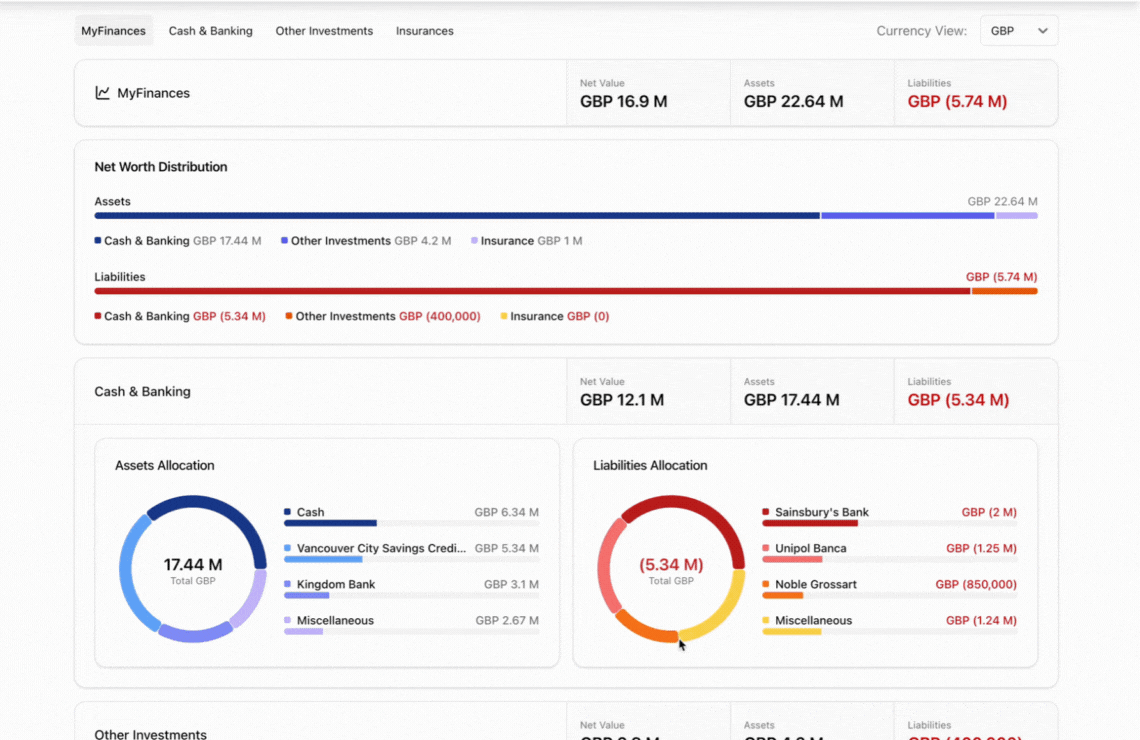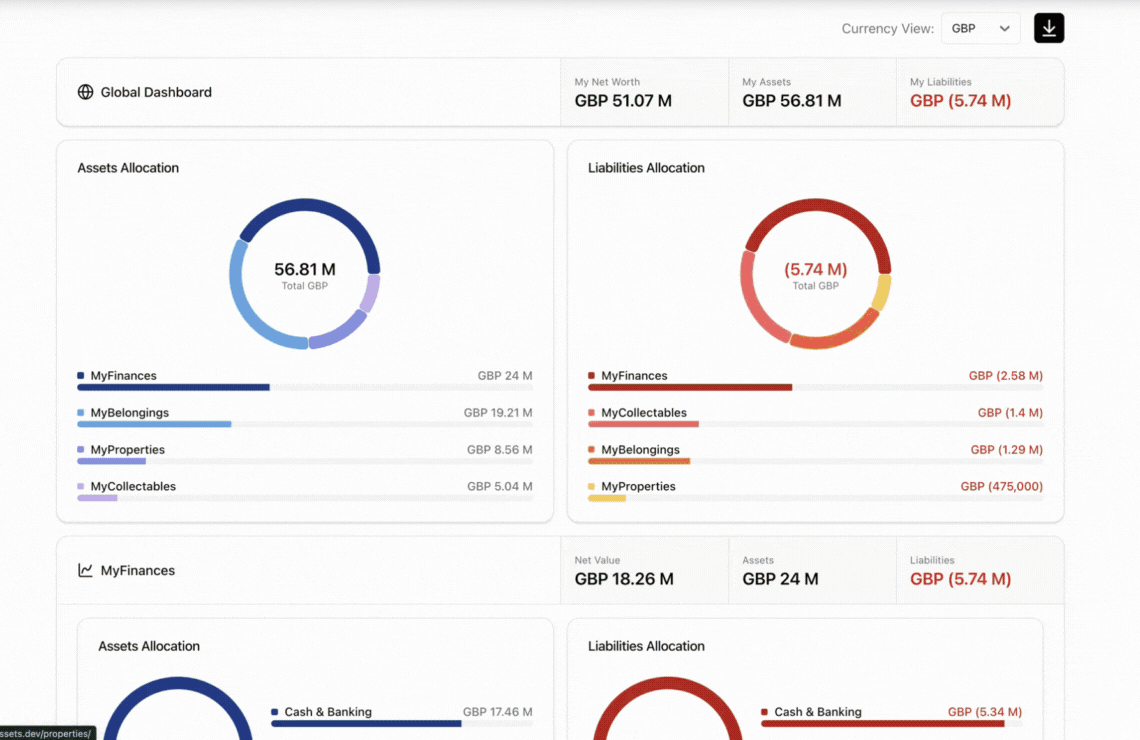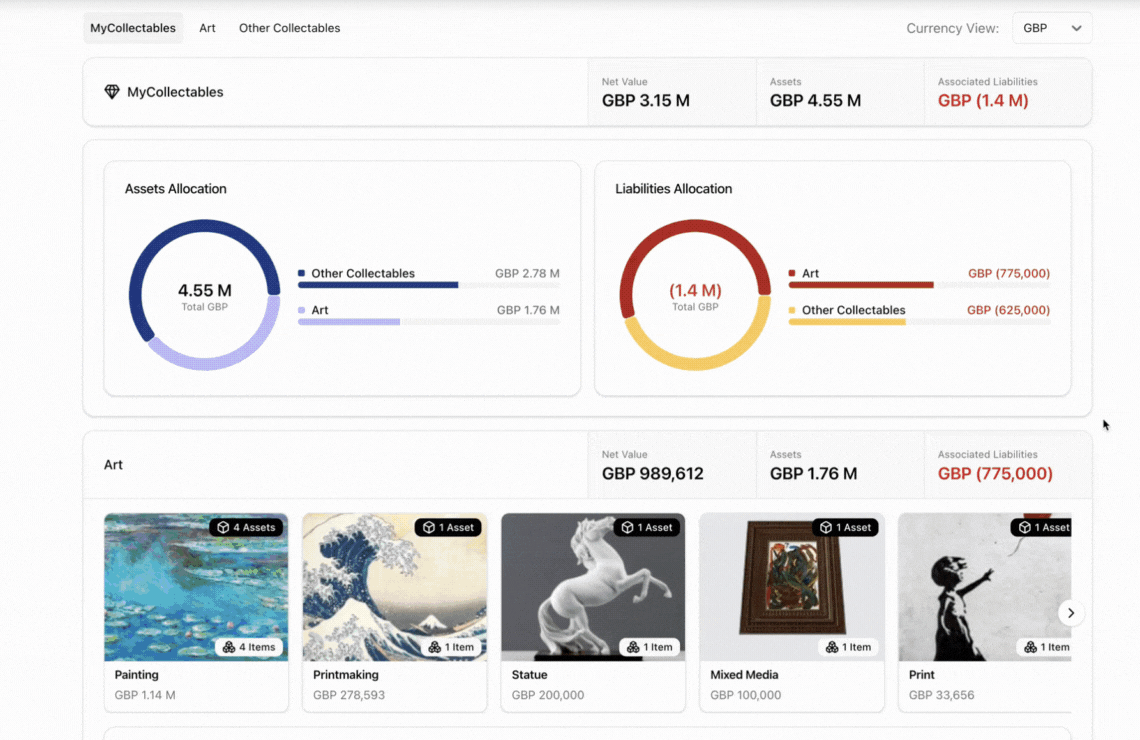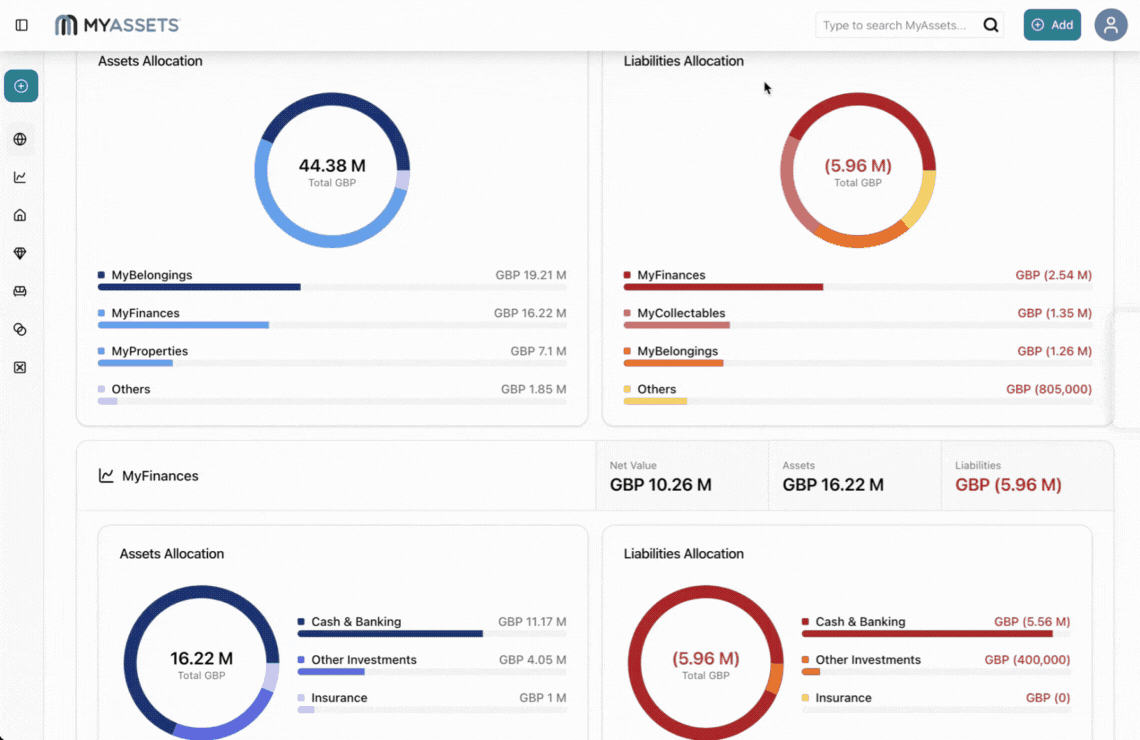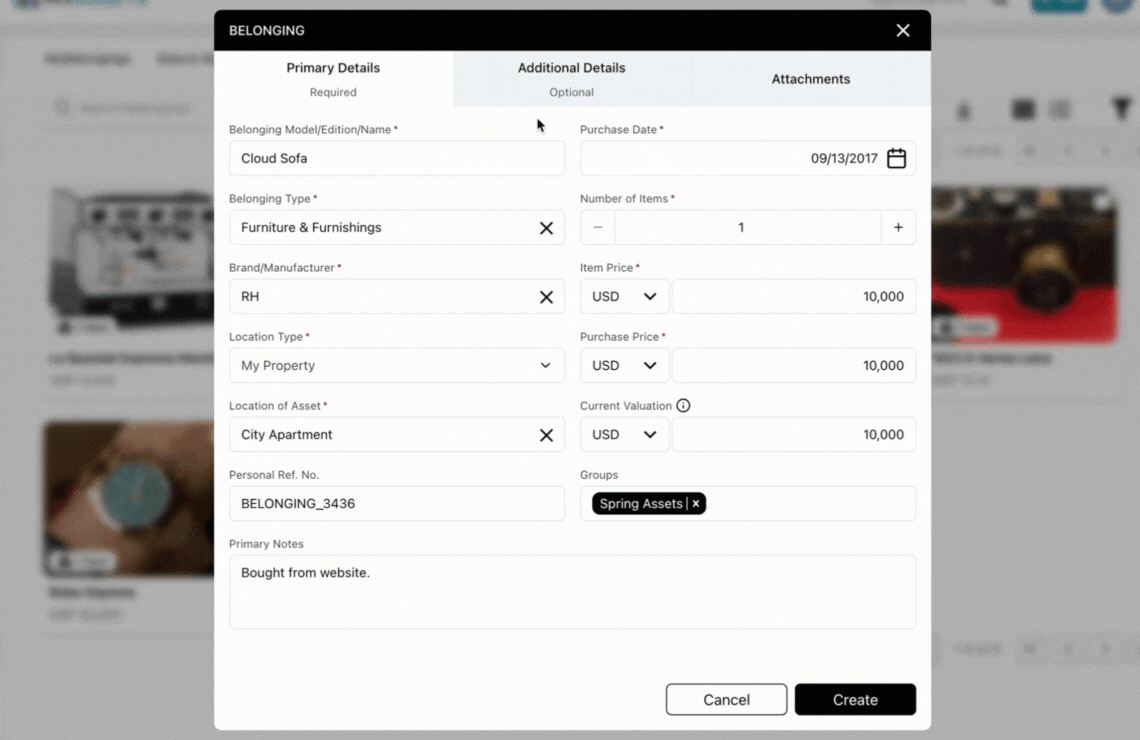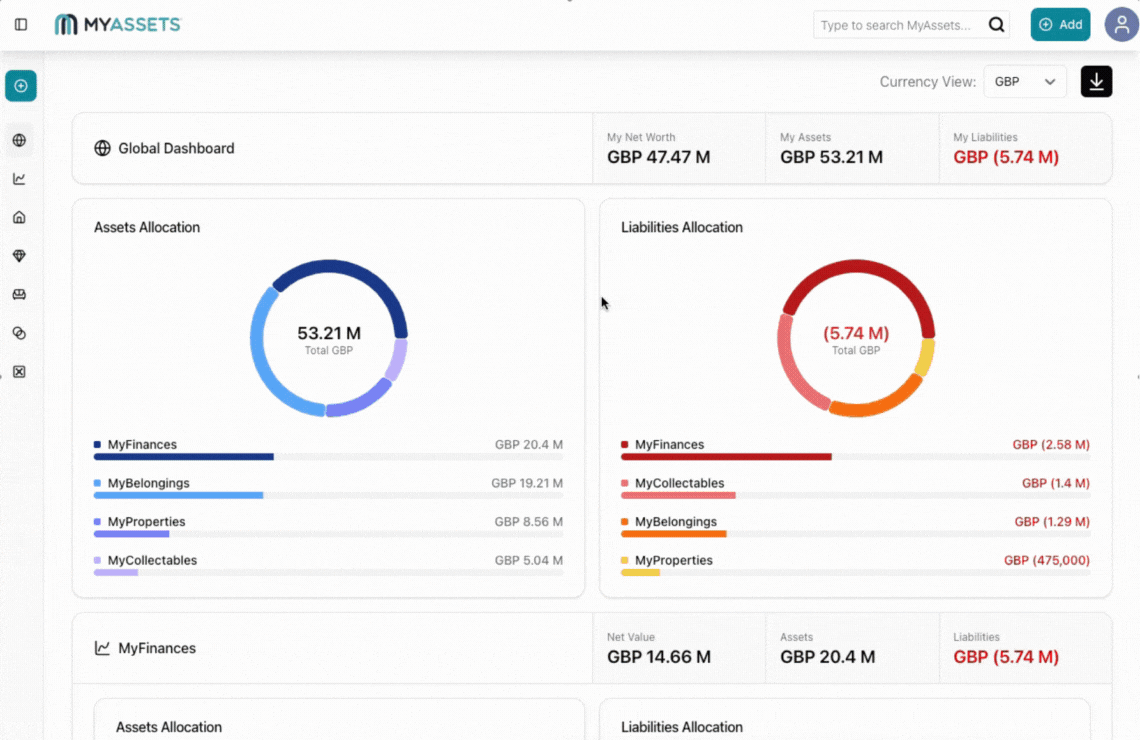Managing personal assets can be complex, especially when your assets span multiple categories such as real estate, vehicles, investments, and collectables.
Each asset type has unique characteristics, values, and maintenance needs. This can make the tracking and management process difficult. For example, real estate requires attention to taxes, insurance, and property maintenance, while investment assets need constant monitoring for market fluctuations and portfolio rebalancing.
Personal assets often lack centralised documentation, leading to scattered or incomplete information. For example, tracking purchase dates, warranties, or depreciation of items like electronics or furniture can be easily overlooked.
To overcome these challenges, you can use an asset management app to consolidate and monitor your diverse asset portfolios on one platform. In fact, one of the key features to look for in an asset management app is its ability to accommodate assets of different classes, types, and categories.
In this article, we’ll explain the common types of assets and how MyAssets caters to a broad range of asset categories.
- What is An Asset?
- What are Common Asset Types?
- Based on Convertibility into Cash: Current Assets vs Fixed Assets
- Based on Physical Existence: Tangible Assets vs Intangible Assets
- Based on Usage: Operating Assets vs Non-operating Assets
- What are the Main Asset Categories in MyAssets?
- What are the Benefits of Using One Asset Management App for All Your Assets?
- A Guide to Using the Different Asset Categories in MyAssets
- Add an Asset to the Relevant Asset Category
- Include Important Details about the Asset
- Monitor your Assets on MyAssets
- Manage Physical and Digital Assets Seamlessly in One Platform
- MyAssets as A Platform for Your Valuables: Frequently Asked Questions
- MyAssets: A Comprehensive Solution for all Asset Types
What is An Asset?
According to Investopedia, “an asset is a resource with economic value that an individual, company, or country owns or controls with the expectation that it will provide a future benefit.”
Assets are a fundamental part of personal and business finance, directly impacting an entity’s financial health. They are listed on balance sheets, helping determine net worth and guiding financial decisions. Properly managing assets involves keeping accurate records, maintaining or appreciating value, and ensuring they are used efficiently.
Understanding what qualifies as an asset and how it contributes to your financial growth is essential for budgeting, investing, and planning for the future. Whether for your personal finances or for your businesses, assets form the foundation of wealth and long-term security.
What are Common Asset Types?
There are six common types of assets, typically divided into three categories: convertibility into cash, physical existence, or usage. Understanding what can be considered an asset facilitates strategic financial planning.
Based on Convertibility into Cash: Current Assets vs Fixed Assets
Two types of assets classified based on their convertibility include current assets and fixed assets.
Current assets, also known as liquid or short-term assets, can easily be converted into cash. Assets in this category are typically expected to be used within a year to enable companies or individuals to achieve short-term obligations. Examples of current assets include short-term deposits, accounts receivable, and marketable securities.
On the other hand, fixed assets, also known as hard or long-term assets, are intended for long-term use and cannot easily be converted into cash. Examples of fixed assets include land, buildings, machinery, vehicles, and equipment. These assets typically depreciate over time, except for land, which usually retains or increases its value.
Current assets are more liquid and support short-term needs, while fixed assets are used over a longer period to generate sustained economic benefit.
Also Read: Best Cash Management Solution: A Complete Guide
Based on Physical Existence: Tangible Assets vs Intangible Assets
Two types of assets classified based on their physical existence include tangible assets and intangible assets.
Tangible assets are items that can be seen, touched, and measured. As such, they can appreciate or depreciate over time. Their value can easily be determined based on market prices or appraisals. Examples include property investment, contemporary art and other collectables, vehicles, machinery, and inventory.
Intangible assets lack a physical existence but still hold significant value. Examples include patents, copyrights, trademarks, and goodwill. These assets are often more difficult to value. Their worth may depend on factors such as legal rights, competitive advantage, or market recognition. Intangible assets are usually amortised over their useful life.
While tangible assets support operational activities directly, intangible assets contribute to long-term success through innovation and intellectual property.
Based on Usage: Operating Assets vs Non-operating Assets
Two types of assets that are classified based on their purpose include operating assets and non-operating assets.
Operating assets are assets actively used in a company’s core operations to generate revenue. These include cash used for operations, inventory, accounts receivable, machinery, buildings, and equipment.
For example, a delivery company’s vehicles or a manufacturer’s factory machines are operating assets because they are essential to the business’s primary activities. These assets are necessary for maintaining regular business operations and are closely tied to production and sales.
Non-operating assets, in contrast, are assets not directly involved in the business's core operations. They may still generate income, but are not essential to everyday functioning. Examples include excess cash, investments, unused land, or rental properties held for income rather than operational use. These assets are often considered when assessing a company’s overall value, but are not critical to operational performance.
The main difference lies in their role: operating assets drive day-to-day revenue, while non-operating assets are supplementary.
Depending on their qualities, assets can be classified into multiple and overlapping categories. For example, your extra cash fund can be a current and non-operating asset. Understanding the classifications of your assets allows you to identify the best asset management tool for your needs.
What are the Main Asset Categories in MyAssets?
This shortlists the four key silos in MyAssets and how they encompass the majority (if not all) of asset types.
MyFinances
MyFinances allows you to add your financial assets, from cash and banking accounts to investments and insurance policies. This gives you a detailed overview of your financial assets, liabilities, and net worth, and how they interact with your assets from different categories.
MyFinances enables you to prioritise financial management and take action to achieve personal financial success.
MyProperties
MyProperties enables you to organise, track, and monitor your entire property portfolio, from residential to commercial properties. You can also use your properties as the “Location” for your other assets. For example, your primary residence can be assigned as the location for your vintage car or your espresso machine.
Using an asset management app like MyAssets is essential in managing a growing property portfolio. MyAssets can help you create a comprehensive catalogue of your properties, including important details such as their acquisition, configuration, and location.
MyCollectables
MyCollectables caters to assets related to art and rare finds antiques, allowing you to manage your collection within one platform. It also gives you the ability to keep detailed records of each art piece or collectable item, such as its location in any of your properties down to the room where they are stored or displayed.
Aside from properties, you can also link your collectables to a contact such as when certain art pieces are lent to an art exhibit.
MyBelongings
Even ordinary belongings can be considered assets. MyBelongings allows you to include household items, family heirlooms, and even personal valuables. This enables you to create a comprehensive home inventory with MyAssets and develop in-depth records about each belonging in your household.
Read more: The Best Household Management Software for Organising Furniture and Assets
What are the Benefits of Using One Asset Management App for All Your Assets?
Consolidating financial, physical, and digital assets into one platform gives you a comprehensive view of your net worth, enabling smarter decision-making. This unified view eliminates the need to log into multiple platforms, reducing complexity and saving time.
With MyAssets, where all your valuables are in one place, it’s much easier to categorise and track financial accounts, properties, belongings, and even art and collectables. MyAssets can help you keep detailed records and empower you to rebalance or streamline your portfolios as needed.
Overall, using one asset management app simplifies financial life, enhances decision-making, and provides a secure, accurate, and accessible way to manage assets effectively.
A Guide to Using the Different Asset Categories in MyAssets
This step-by-step guide shows you how to upload different types of assets on the platform.
1. Add an Asset to the Relevant Asset Category
You can add any type of asset and include it in the relevant category (e.g. MyFinances, MyProperties, MyCollectables, or MyBelongings). Once you’ve included the required Primary Details of the asset, you will be able to access it on the platform.
2. Include Important Details about the Asset
The Creation modal in MyAssets encourages you to create comprehensive records about each asset, as it includes modals for Primary Details and Additional Details.
You can include more information about the following:
- Acquisition
- Attributes
- Location
- Ownership
You also have the option to attach relevant documents and images, ensuring that records for that asset is accessible and secure on the platform.
Creating detailed records about assets can ease life admin tasks and improve life organisation. It can ease the managerial and operational tasks often tied to maintaining your personal life.
3. Monitor your Assets on MyAssets
MyAssets provides visual charts that help you track and monitor the growth of your assets. As an asset management system, the platform also enables you to edit and update information about assets to ensure that your records are up-to-date.
Manage Physical and Digital Assets Seamlessly in One Platform
MyAssets' features indicate that it is a digital asset management app that gets things done. The platform’s capabilities to accommodate assets of all types ensure that your asset management requirements are met.
MyAssets also includes an interlinking feature that allows you to connect multiple assets. For example, you can include Contacts from your Address Book into your art asset. That art asset can also be located in a residence you’ve added in MyProperties while including its exact location within the property (e.g. dining room, library, office, etc.).
Using MyAssets enables you to organise, track, and monitor all your assets in one platform.
MyAssets as A Platform for Your Valuables: Frequently Asked Questions
1. What are asset classes?
Asset classes are categories of investments based on characteristics such as risk, return, and market behaviour. Some examples include equities, fixed income, real estate, and commodities.
2. What are common asset types?
Asset types can include: current assets, fixed assets, tangible assets, intangible assets, operating assets, and non-operating assets.
3. Can an asset management app accommodate different asset categories?
This depends on the capabilities of the asset management app. With MyAssets, you can include assets across different types and classes.
MyAssets: A Comprehensive Solution for all Asset Types
While some asset management apps can only cater to one or two asset types, MyAssets is designed to accommodate assets from every category.
Whether you hold financial assets, physical assets, or digital assets, MyAssets provides seamless integration and tracking. MyAssets offers a unified Global Dashboard that presents your entire portfolio clearly, helping you understand your net worth and make informed financial decisions.
With wide-range categories, real-time updates, and secure data management, MyAssets simplifies asset tracking while enhancing organisation and planning. It's an all-in-one solution for managing your assets efficiently and effectively.
Ready to organise all your assets in one platform? Start managing your assets and their corresponding documents with MyAssets' 14-day free trial.

